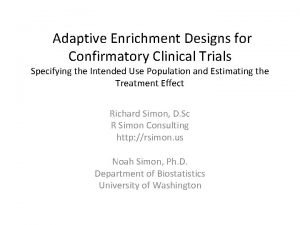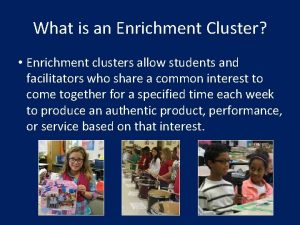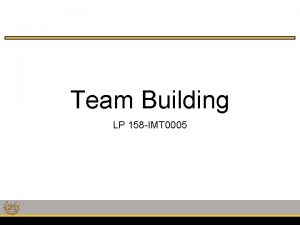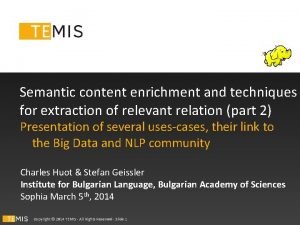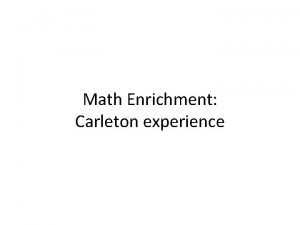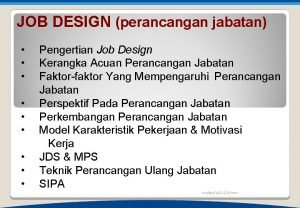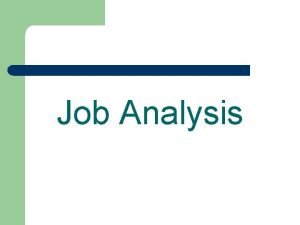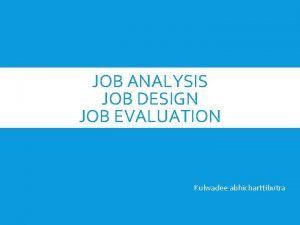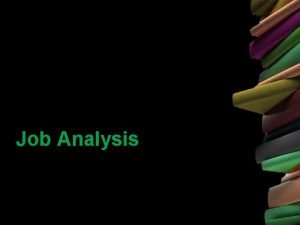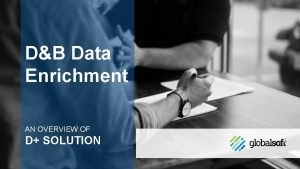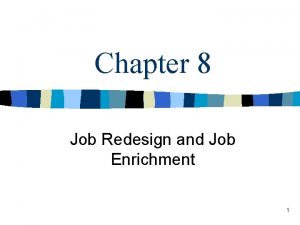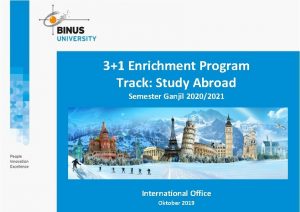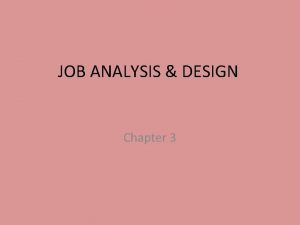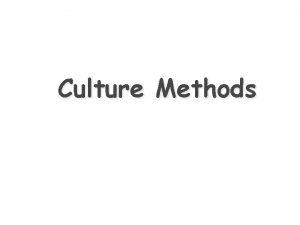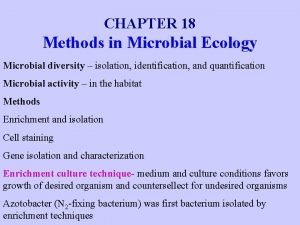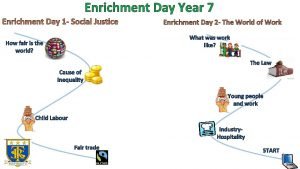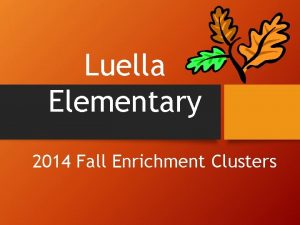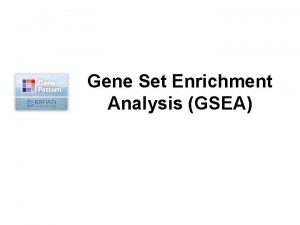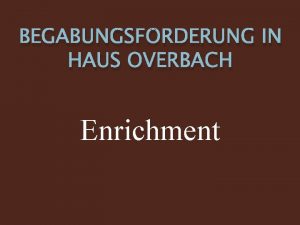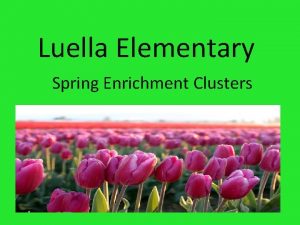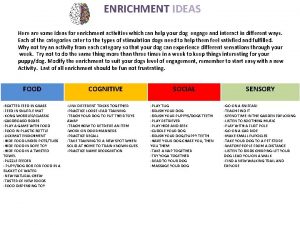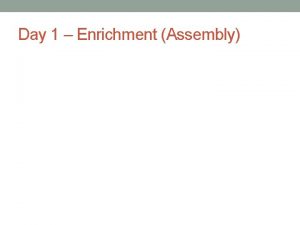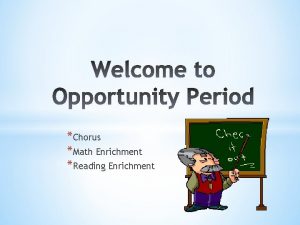Adaptive Population Enrichment for Oncology Trials with Time
























- Slides: 24

Adaptive Population Enrichment for Oncology Trials with Time to Event Endpoints Cyrus Mehta, Ph. D. President, Cytel Inc.

References and Acknowledgements • Statistical research with Sebastien Irle and Helmut Schäfer, Institute of Medical Biometry, University of Marburg, Germany • Problem formulation based on collaborations with the Pfizer Inc. , and M. D. Anderson Cancer Center • Key Reference: • Irle and Schäfer. “Interim design modifications in time -to-event studies. ” JASA, 2012; 107: 341 -348 • We thank Pranab Ghosh for expert programming of the simulation tools 10 Sept 2013 FDA and Industry Workshop. 9 -18 -2013

Outline of Talk • Motivation for enrichment trials in oncology • Adaptive enrichment design for PFS endpoints • Statistical methodology • Conditional error function in time-to-event trials • Performing a closed test • Simulation guided design • Future directions 10 Sept 2013 FDA and Industry Workshop. 9 -18 -2013

Current State of Oncology Trials • Failure rate for late stage oncology trials is almost 60% (Kola and Landis, 2004) • Two recent scientific developments can improve this track record • development of molecularly targeted agents • statistical methodology of adaptive trial design applied to time-to-event data • Fact: Some subgroups benefit differentially from others when treated with the targeted agent 10 Sept 2013 FDA and Industry Workshop. 9 -18 -2013

Oncology Products Approved in the US for Selected Patient Populations Compound/Target Indication (prevalence target) Crizotinib (Xalkori®)/ ALKrearrangement • Non-small cell lung cancer with ALK-rearrangements (5%) Vemurafenib (Zelboraf®)/ BRAF mutation • Advanced melanoma with mutant BRAF (30 -40%) Trametinib (Mekinist™)/ MEK • Advanced melanoma with mutant BRAF (30 -40%) Trastuzumab (Herceptin®); Lapatinib (Tykerb®)/ Her 2 • Her 2 expressing breast cancer (25%) • Her 2 expressing metastatic gastric cancer (20 -30%) Aromatase inhibitors (letrozole, exemestane) • ER(+) breast cancer (60 -70%) Rituximab (Rituxan®)/ CD 20 • CD 20(+) B-cell lymphomas (90%+) Cetuximab (Erbitux®); Panitumumab (Vectibix®) / EGFR • Advanced Head/neck cancer (~100%) • EGFR(+) metastatic colorectal cancer (60 -80%) • KRASWT metastatic colorectal cancer (60%) 10 Sept 2013 FDA and Industry Workshop. 9 -18 -2013

Considerations for Evaluation of Biomarker Predictivity • Randomize patients in both biomarker subgroups • Evaluate predictivity in a phase 2 setting • Phase 3 requires validated companion diagnostic • Issues to consider for the phase 2 trial • • • 10 Sept 2013 Strength of preclinical evidence Prevalence of the marker Sample size limitations (160 -200 patients) Time-to-event endpoint (PFS or OS) No more than 3 -year study duration Reproducibility and validity of assays FDA and Industry Workshop. 9 -18 -2013

Features of an Adaptive Enrichment Design • Two-stage design: all comers at Stage 1 • Interim analysis at end of Stage 1, utilizing ALL available information (censored and complete) • Adaptation decision implemented in Stage 2: • Proceed with no design change (except possible SSR) • Proceed with biomarker subgroup (and possible SSR) • Terminate for futility • Perform a closed test for the final analysis 10 Sept 2013 FDA and Industry Workshop. 9 -18 -2013

Notation • 10 Sept 2013 FDA and Industry Workshop. 9 -18 -2013

Schematic Representation of Protocol . 5 Treatment Stop for Futility . 5 Control A L E L R S C O M If S T R A T I F Y I N T E R I M N A L Y S I S A . 5 Treatment patients . 5 Control events Continue with S only F I L N Y A S L I S A N A Perform a closed test of S is dropped, randomize all remaining patients to subgroup S and increase its events 10 Sept 2013 FDA and Industry Workshop. 9 -18 -2013

Time Line of S Subgroup 0 Time Axis Interim Analysis 10 Sept 2013 Planned Final Analysis FDA and Industry Workshop. 9 -18 -2013 Actual Final Analysis

0 Time Axis Interim Analysis 10 Sept 2013 Planned Final Analysis FDA and Industry Workshop. 9 -18 -2013

2. 24 1. 96 10 Sept 2013 2. 24 FDA and Industry Workshop. 9 -18 -2013

10 Sept 2013 FDA and Industry Workshop. 9 -18 -2013

Preserving Type-1 Error: CER Method 1 ( Mullër and Schafër, 2001) 0 Time Axis Interim Analysis 10 Sept 2013 Planned Final Analysis FDA and Industry Workshop. 9 -18 -2013 Actual Final Analysis

Comments on CER Method 1 • 10 Sept 2013 FDA and Industry Workshop. 9 -18 -2013

Preserving Type-1 Error: Method 2 (Irle, Schafër, Mehta, 2012, methodology) 0 Time Axis Interim Analysis 10 Sept 2013 Planned Final Analysis FDA and Industry Workshop. 9 -18 -2013 Actual Final Analysis

Comments on CER Method 2 • 10 Sept 2013 FDA and Industry Workshop. 9 -18 -2013

The setting for a simulation guided design • 10 Sept 2013 FDA and Industry Workshop. 9 -18 -2013

• 10 Sept 2013 FDA and Industry Workshop. 9 -18 -2013

Use Phase 2 Simulations to Guide Phase 3 Go/No-Go/Enrich Decisions Decision rules for initiating a Phase 3 trial based on the results of the Phase 2 adaptive enrichment trial Phase 2 Outcome: Decision Rule for Phase 3 Initiate Phase 3 in S only No Go/investigate No Go 10 Sept 2013 FDA and Industry Workshop. 9 -18 -2013

Assume HR(S) = 0. 5 10 Sept 2013 FDA and Industry Workshop. 9 -18 -2013

Assume HR(S) = 0. 5 10 Sept 2013 FDA and Industry Workshop. 9 -18 -2013

Assume HR(S) = 0. 5 10 Sept 2013 FDA and Industry Workshop. 9 -18 -2013

Concluding Remarks and Future Work • 10 Sept 2013 FDA and Industry Workshop. 9 -18 -2013
 Adaptive enrichment design
Adaptive enrichment design Chapter 4 population ecology test answer key
Chapter 4 population ecology test answer key Population ecology section 1 population dynamics answer key
Population ecology section 1 population dynamics answer key Population ecology section 1 population dynamics
Population ecology section 1 population dynamics Population ecology section 1 population dynamics answer key
Population ecology section 1 population dynamics answer key Example of elapsed time
Example of elapsed time Enrichment clusters
Enrichment clusters Advantages of job enrichment
Advantages of job enrichment Doctrine of unjust enrichment
Doctrine of unjust enrichment Army team building stages
Army team building stages Semantic content enrichment
Semantic content enrichment Carleton math enrichment
Carleton math enrichment Job enlargement contoh
Job enlargement contoh Job description tagalog sample
Job description tagalog sample Job analysis information hierarchy
Job analysis information hierarchy Job analysis matrix
Job analysis matrix D&b data enrichment
D&b data enrichment Job redesign job enrichment and job enlargement
Job redesign job enrichment and job enlargement Binus enrichment program study abroad
Binus enrichment program study abroad Enrichment cluster ideas
Enrichment cluster ideas Job analysis and design
Job analysis and design Conceptual framework in iot
Conceptual framework in iot Enrichment culture technique
Enrichment culture technique Enrichment culture technique
Enrichment culture technique Vocabulary enrichment exercises
Vocabulary enrichment exercises
